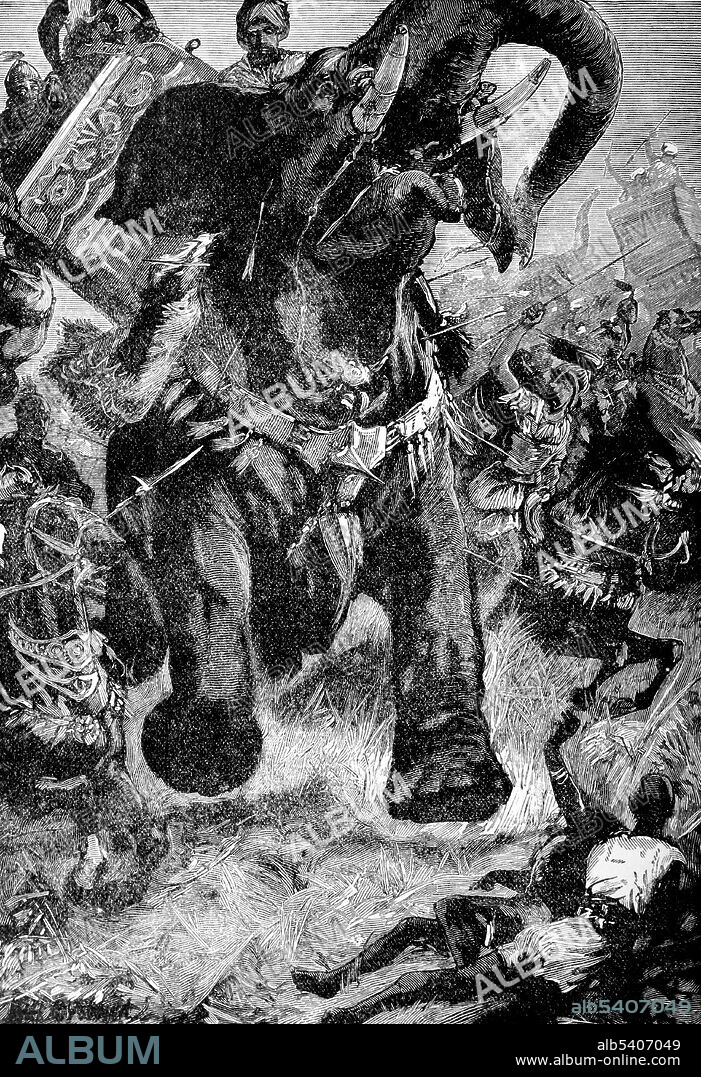alb5407049
Alexander the Great, Battle of the Hydaspes,326 BC

|
Añadir a otro lightbox |
|
Añadir a otro lightbox |



¿Ya tienes cuenta? Iniciar sesión
¿No tienes cuenta? Regístrate
Compra esta imagen

Título:
Alexander the Great, Battle of the Hydaspes,326 BC
Descripción:
Ver traducción automática
The Battle of the Hydaspes was fought in 326 BC between Alexander the Great and King Porus of the Paurava kingdom on the banks of the Jhelum River (known to the Greeks as Hydaspes) in the Punjab region of the Indian subcontinent. Alexander's decision to cross the monsoon-swollen river despite close Indian surveillance, in order to catch Porus's army in the flank, has been referred to as one of his masterpieces. The Indian war elephants were heavily armored and had castle-like howdahs on their back carrying a trio of archers and javelin men. The battle resulted in a Greek victory and the surrender of Porus. Cyclopedia of Universal History by John Clark Ridpath, 1890 (cropped and cleaned).
Personas:
Crédito:
Album / Science Source
Autorizaciones:
Modelo: No - Propiedad: No
¿Preguntas relacionadas con los derechos?
¿Preguntas relacionadas con los derechos?
Tamaño imagen:
3285 x 4800 px | 45.1 MB
Tamaño impresión:
27.8 x 40.6 cm | 10.9 x 16.0 in (300 dpi)
Palabras clave:
ALEJANDRO MAGNO • ANTIGUO • BLANCO Y NEGRO • BLINDADA • CONQUISTADOR • ELEFANTE DE GUERRA • EMPERADOR • FAMOSA • FAMOSO • GRIEGO • HISTORIA • MACEDONIAN • PERSONALIDAD • S. IV AC • SIGLO IV A. C. • SIGLO IV AC • SIGLO IV AC. • SOLDADOS
 Pinterest
Pinterest Twitter
Twitter Facebook
Facebook Copiar enlace
Copiar enlace Email
Email
